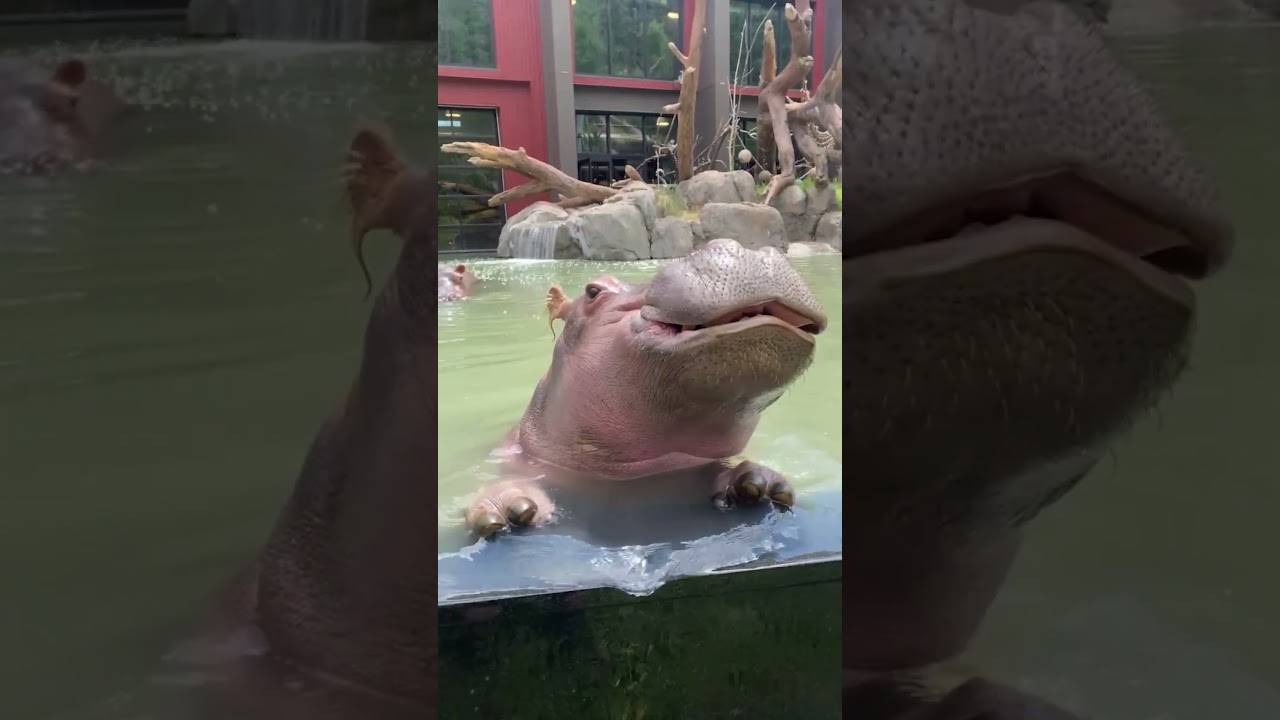- Overview of Omo, the three-year-old hippo, and his interaction with his keeper during snack time
- Insights into the biology and behavior of hippopotamuses
- The role of zoo management in facilitating educational experiences and wildlife conservation
- The importance and impact of animal enrichment activities in zoos
- Discussion on conservation efforts and the challenges facing hippos in the wild
Omo, a three-year-old hippopotamus, has become a captivating presence at his zoo, engaging visitors and wildlife enthusiasts alike with his endearing personality and unique interactions with his keeper during snack time. In a recently released video, we see Omo eagerly receiving his snack, illustrating both a strong bond with his human caretakers and the broader themes of zoo management and wildlife conservation. This scene offers an important platform to explore the biology and behavior of hippopotamuses, the meticulous care provided through zoo programs, and the critical issues surrounding hippo conservation in the wild.
The hippopotamus, or "river horse," is an impressive mammal that commands fascination and respect. Weighing between 2,900 to 4,000 pounds, they are outstandingly buoyant and move with surprising agility in water. Despite their often leisurely appearance, hippos play a crucial role in their ecosystems as they help regulate the aquatic environment through their grazing patterns and natural behaviors. Hippos are primarily herbivorous, subsisting largely on grass, a fact eloquently demonstrated by Omo’s enthusiastic snacking. These animals tend to feed at night, spending the cooler hours munching on grass along the riverbanks.
In analyzing Omo’s interactions with his keeper, it becomes evident how crucial proper zoo management is for the welfare and education of both animals and humans. Zoos nowadays work diligently to replicate natural habitats as closely as possible, providing species-specific needs for diet, space, and social interaction. This careful upkeep, illustrated by Omo’s vibrant health and behavior, showcases the positive impact of scientific knowledge and research-informed policies on captive animals.
Animal enrichment activities, such as the feeding routine experienced by Omo, are vital for stimulating the physical and mental well-being of zoo animals. These programs are designed to mimic the complexity of an animal’s native environment, thus preventing boredom and enhancing natural behaviors. Enrichment can include a variety of interactive objects, diverse feeding strategies, or structures encouraging exploration and play. These activities make for a more engaging and educational visit for the audience while ensuring the animal’s quality of life is prioritized.
The situation of hippopotamuses in the wild is a sobering contrast and a profound subject for conservation discussion. Hippos are currently listed as vulnerable by the International Union for Conservation of Nature (IUCN), with their survival threatened by habitat loss and illegal hunting. They are often targeted for their ivory-like teeth and meat, while also suffering from increasing competition for water resources due to human encroachment. Being semi-aquatic animals, adequate access to water bodies is essential for their survival.
Conservationists around the world are actively working to protect these magnificent creatures and their habitats. This involves not only direct anti-poaching measures but also educational efforts to highlight the importance of hippos in maintaining ecological balance. Local communities are engaged to promote sustainable practices, which are crucial to reduce conflict and buildup of resources needed by both humans and wildlife.
Zoo programs play a critical role in conservation efforts by educating the public and serving as a genetic reservoir for endangered species. Successful reproductive programs can offer a safeguard against the complete loss of a species. Watching Omo in his secured environment reminds us of our responsibility to act as stewards of the natural world, raising awareness and fostering connections with the wild up close.
In conclusion, the image of Omo, the three-year-old hippo having snacks with his keeper, serves as a powerful reminder of the synergy between zoological care and conservation outreach. His story underlines the need for ongoing efforts in ensuring the welfare of hippos both in captivity and in the wild. With increased attention to these majestic animals’ needs and challenges, efforts can continue toward a more sustainable future for Omo and his kin across the globe.
*****
Source Description
Enjoy snack time in Water’s Edge: Africa, with 3-year-old Nile hippo, Omo!


